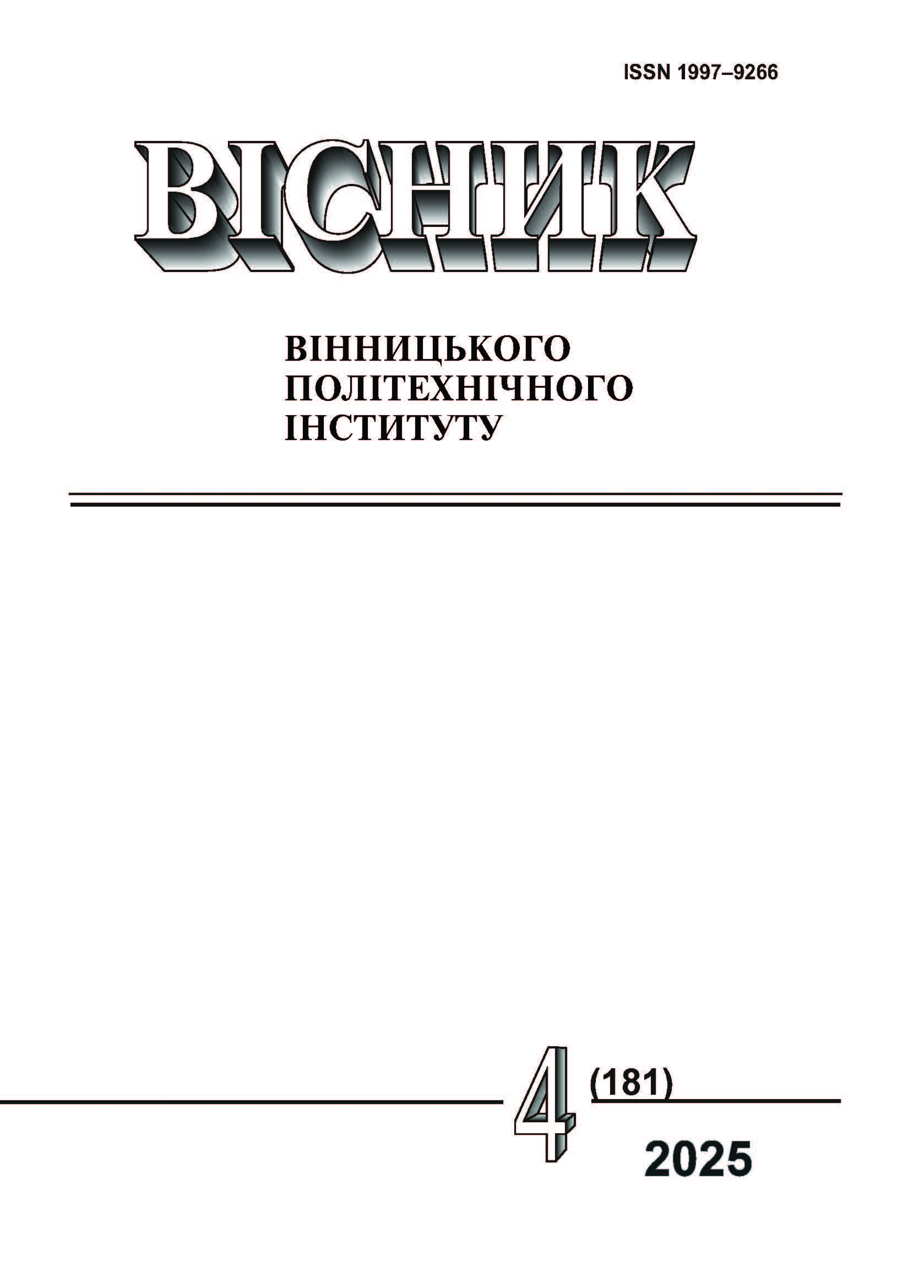ПОРІВНЯЛЬНИЙ АНАЛІЗ ЕФЕКТИВНОСТІ РУХУ ТРАНСПОРТНИХ ПОТОКІВ У РАЗІ РЕАЛІЗАЦІЇ ЗЕЛЕНОЇ ХВИЛІ З УРАХУВАННЯМ ВПЛИВУ НА ДРУГОРЯДНІ ДОРОГИ
DOI:
https://doi.org/10.31649/1997-9266-2025-181-4-162-169Ключові слова:
координоване регулювання, транспортні потоки, перехрестя, простої, ефективністьАнотація
The article provides a detailed presentation of the results of a comprehensive study on the effectiveness of implementing coordinated traffic flow control based on the "green wave" principle. This research was conducted using microscopic simulation modelling in the SUMO environment, taking as a case study the corridor of Nauky Avenue under conditions of gradually increasing traffic intensity. The aim of the study was to comprehensively assess the feasibility of applying synchronized signal timings at urban intersections, considering not only the indicators of the main arterial road but also the changes in traffic characteristics of secondary approaches, which traditionally remain outside the focus in most studies. For this purpose, a realistic model of the transport network was built and calibrated based on an origin-destination matrix generated by the uniform probability method and refined using the TFlowFuzzy procedure with the integration of drone-based video observation data. The obtained results confirmed the hypothesis that both the "green wave" and adaptive control significantly reduce the average queue length and idle time on the main road; however, they simultaneously cause an increase in these same indicators on the secondary approaches, which in some cases offsets the overall positive effect. Considering the identified imbalance, it is recommended to use combined schemes in which adaptive or fixed "green wave" control is integrated with multicriteria optimization of traffic signal parameters, allowing for the minimization of total delays within the network and the prevention of critical deterioration in the level of service on secondary roads under high load conditions. The practical value of this work lies in the clearly formulated applicability threshold of the "green wave" depending on the ratio of main to secondary flow intensities, as well as in the proposals for integrating adaptive control algorithms under complex topologies of large cities. This provides a foundation for the further development of multicriteria optimization models and the creation of more balanced traffic management strategies.
Посилання
Jing Binbin, and Zhengjie Huang, “Green wave control model simultaneously considering passenger cars and buses in closed road networks,” Applied Sciences, vol. 14.13, pp. 57-72, 2024.
Bao Riyong, et al. “Green wave arterial cooperative control strategy based on through-traffic priority,” Electronics, vol. 13.15, pp. 29-39, 2024.
Nanchen Nimyel Caleb, and Selfa Johnson Zwalnan, “Optimization of Green Wave Traffic Control Systems: A Literature Review and Research Directions,” Journal of Scientific and Engineering Research, vol. 8(7), pp. 42-50, 2021.
Christian Liebchen, “Bidirectional Green Waves for road arterials: optimization and simulation,” Transportation Research Record, vol. 2678.1, pp. 49-60, 2024.
В. Шевченко, «Визначення раціональних параметрів координованого управління дорожнім рухом на міських магістралях.» дис. канд. техн. наук., фак-т інформ., Харківський національний автомобільно-дорожній університет, 2023.
Jun Zhang, et al. “An integrated arterial coordinated control model considering green wave on branch roads and pedestrian crossing time at intersections,” Journal of Management Science and Engineering, vol. 5.4, pp. 303-317, 2020.
A. Rossolov, “Analiza lokalizacji parkingów buforowychna przykładzie dużego miasta,” Zeszyty Naukowo-Techniczne Stowarzyszenia Inżynierów i Techników Komunikacji Rzeczpospolitej Polskiej Oddział w Krakowie. At: Krakowie, № 1(105), pp. 85-92, 2015.
Yousefikia Mohammad, et al. “A study on the generalized TFlowFuzzy OD estimation,” Proceedings of Australasian Transport Research Forum, Brisbane, Australia, 2013.
П. Ф. Горбачов, Є. В. Любий, і О. С. Колій, «Аналітичне моделювання транспортних затримок на регульованих перехрестях при груповому прибутті транспортних засобів до них,» Системи управління, навігації та зв’язку, № 3(73), с. 5-9, 2023.
##submission.downloads##
-
pdf
Завантажень: 14
Опубліковано
Як цитувати
Номер
Розділ
Ліцензія

Ця робота ліцензується відповідно до Creative Commons Attribution 4.0 International License.
Автори, які публікуються у цьому журналі, згодні з такими умовами:
- Автори зберігають авторське право і надають журналу право першої публікації.
- Автори можуть укладати окремі, додаткові договірні угоди з неексклюзивного поширення опублікованої журналом версії статті (наприклад, розмістити її в інститутському репозиторії або опублікувати її в книзі), з визнанням її первісної публікації в цьому журналі.
- Авторам дозволяється і рекомендується розміщувати їхню роботу в Інтернеті (наприклад, в інституційних сховищах або на їхньому сайті) до і під час процесу подачі, оскільки це сприяє продуктивним обмінам, а також швидшому і ширшому цитуванню опублікованих робіт (див. вплив відкритого доступу).





